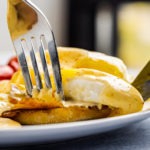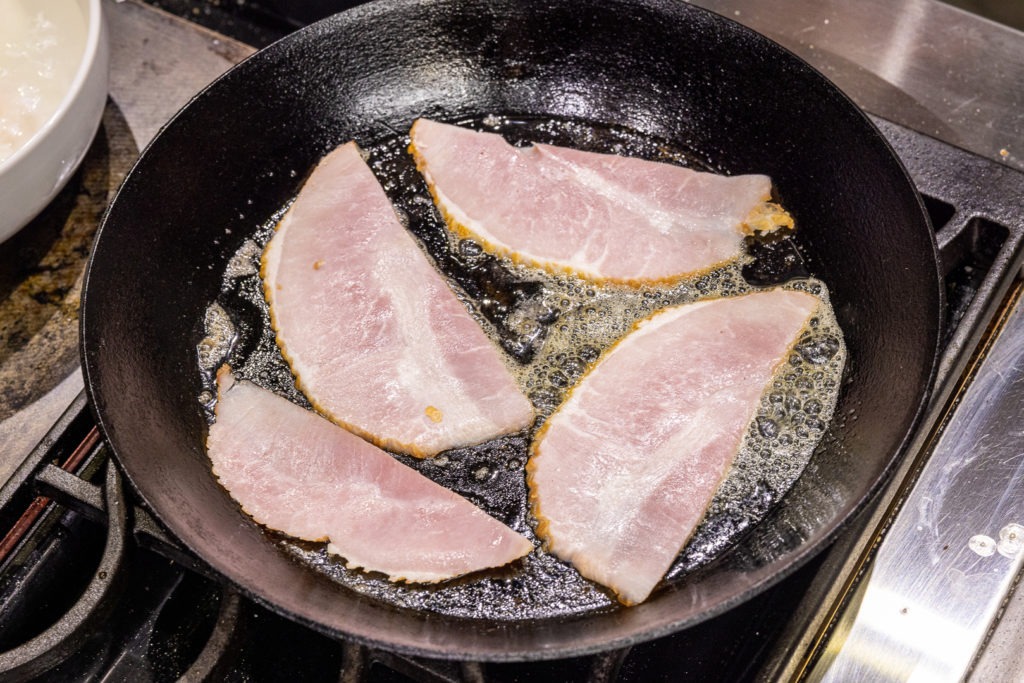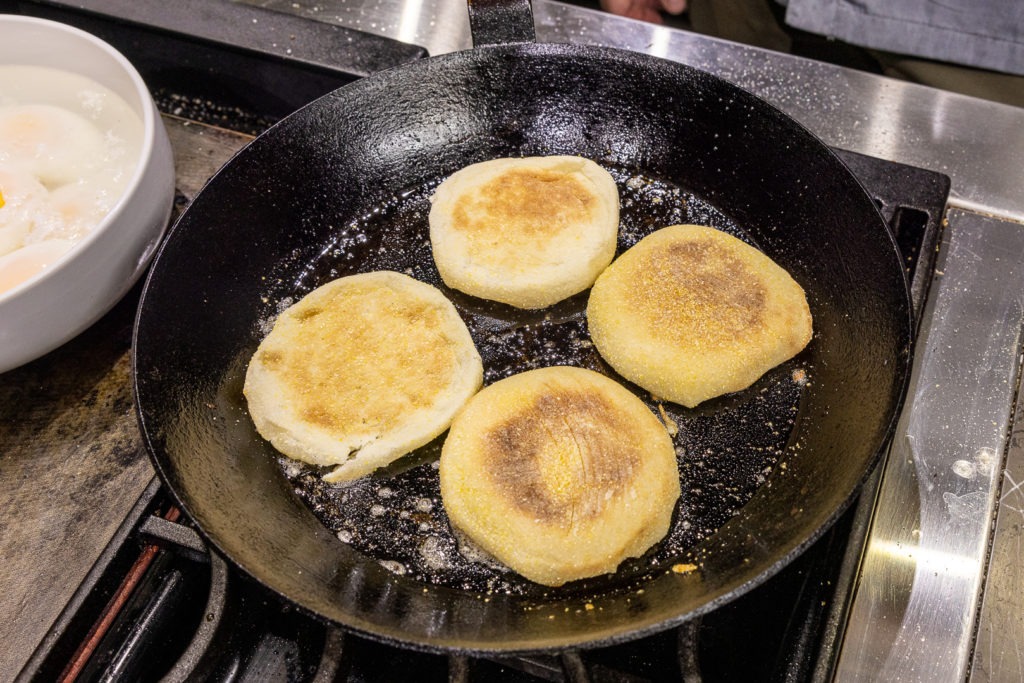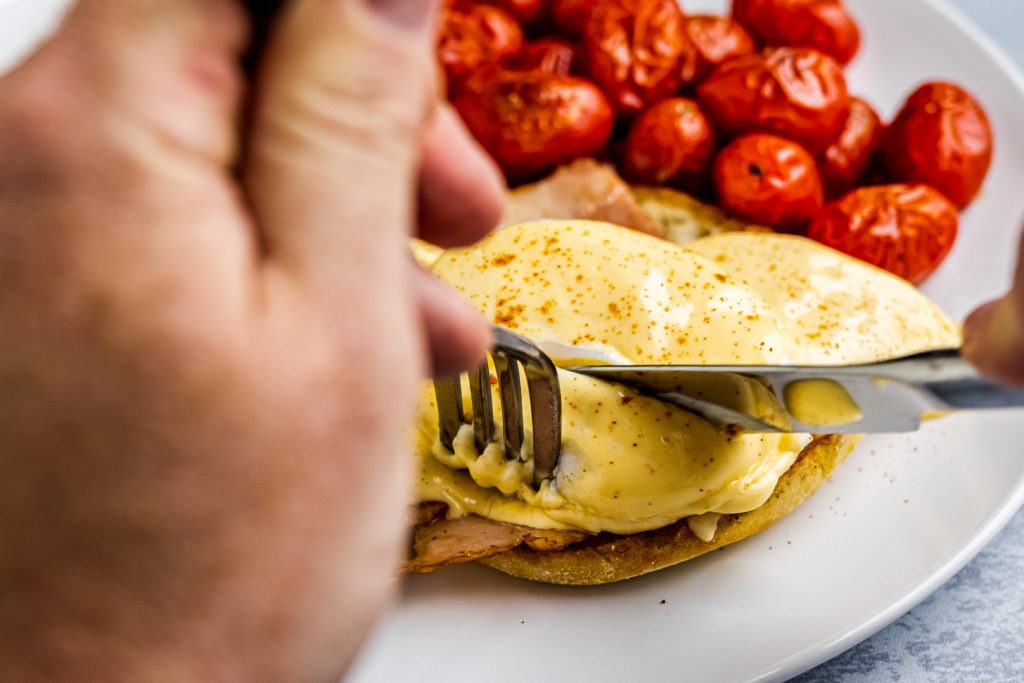Description
Eggs benedict, with thanks to J. Kenji López-Alt at SeriousEats.com, also TastingTable.com, and SimplyRecipes.com
Ingredients
Scale
For the Benedict
- 8 Eggs
- 4 English muffins, split
- 8 slices good-quality Canadian bacon or ham
- 1 batch Hollandaise sauce (see below)
- 2 Tbsp butter
- Paprika for garnish
For the Hollandaise Sauce
- 2 egg yolks
- 2 tsp water
- 2 tsp lemon juice
- 1/2 tsp salt
- 1/4 tsp cayenne pepper
- 1 cup (2 sticks) unsalted butter
Instructions
Make the Hollandaise sauce
- Melt the butter in a saucepan over medium heat.
- Meanwhile, place yolks, water, lemon juice, salt, and cayenne in an immersion blender cup or another tall cup that an immersion blender can fit into.
- Heat the butter the rest of the way to 200°F (93°C), check it with a Thermapen, and pour it into a glass measuring cup for easier handling.
- Start blending the yolks in the cup and pour the butter into it in a slow stream. (The stream needs to not be too fast, but needn’t be as slow as for a hand-whisked emulsion.) Continue to blend until the sauce is thick and creamy. Set aside.
Poach the eggs
- Fill a deep skillet or shallow saucepan with water, add a teaspoon of salt.
- Set your ChefAlarm probe in place with a pot clip so the tip of the probe is suspended in the water without touching the bottom of the pan.
- Set ChefAlarm high alarm to 180°F (82°C).
- Once the water comes to a stable target temperature, set the ChefAlarm low-alarm to 175°F (79°C) to make sure it doesn’t dip too far during cooking.
- One at a time, crack the eggs into a strainer over a bowl or sink, then, once the thin white stops straining out, lower the basket of the strainer into the heated water and tip the egg out.
- Jiggle each egg slightly with a wooden spoon for a few seconds to make sure it doesn’t stick to the pan.
- Set a timer for 4 minutes. You may vary that time depending on your doneness preference and the size of your eggs—3 minutes will be quite runny, 5 will be firmer, like a medium-cooked yolk.
- When the TimeStick alarm sounds, check the eggs. The yolk should still jiggle slightly under pressure (don’t poke it too hard!) and the whites should not be runny.
- Transfer them to a bowl filled with warm water, where they can be held easily.
Prepare the ham and muffins
- Add 1/2 Tbsp of the unmelted butter to a second skillet and heat it over medium-high heat
- Once the butter is hot, add the ham slices as many as can fit at a time.
- Cook until browned on one side, flip and brown on the other side. Repeat until all ham is cooked.
- Add half the remaining butter to the pan and toast half of the English muffins, face down in the hot buttered skillet.
- Repeat with remaining butter and muffins. Alternatively, you can butter each slice and place them on a cooking sheet in a 450°F (232°C) oven for about 5 minutes.
Assemble your Eggs Benedict!
- Place a slice of ham on each toast, top with a poached egg and a nice dollop of Hollandaise. Sprinkle with a little paprika for color, and serve.



